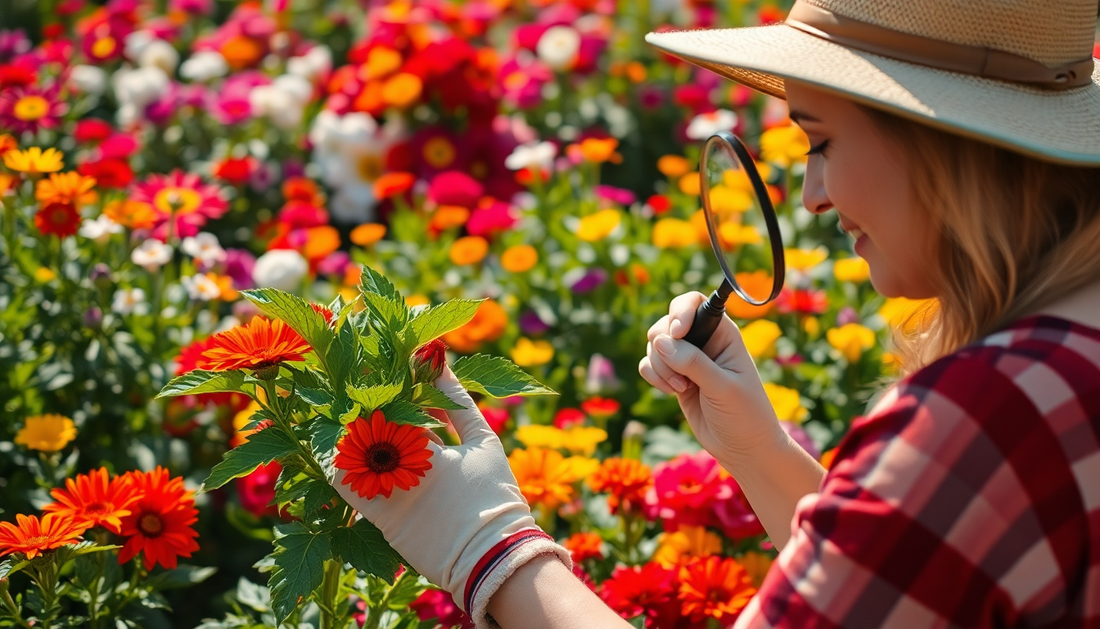
Preventing Powdery Mildew: Keeping Your Outdoor Flowers Healthy and Vibrant
Share
As the sun shines brightly and the days grow longer, gardeners across the world eagerly await the vibrant blooms of their outdoor flowers. However, one common enemy that can quickly dampen the joy of a flourishing garden is the dreaded powdery mildew. This fungal disease can wreak havoc on a wide variety of plants, leaving them with a unsightly white, powdery coating that can stunt growth and even lead to plant death if left unchecked.
At Idyl, your one-stop shop for all your gardening needs in Bangalore, we understand the frustration that comes with battling powdery mildew. That's why we've compiled this comprehensive guide to help you prevent and treat this pesky problem, ensuring your outdoor flowers remain healthy and beautiful throughout the growing season.
Understanding Powdery Mildew
Powdery mildew is a fungal disease that affects a wide range of plants, including many popular outdoor flowers such as roses, peonies, and zinnias. The fungus thrives in warm, humid conditions and can spread rapidly, covering the leaves, stems, and even flowers with a white, powdery growth.
The fungus feeds on the plant's cells, weakening the plant and making it more susceptible to other diseases and pests. If left untreated, powdery mildew can cause the leaves to yellow, curl, and eventually die, significantly reducing the plant's overall vigor and aesthetic appeal.
Identifying Powdery Mildew
The first step in preventing and treating powdery mildew is to be able to recognize the symptoms. Look for the following signs:
- White, powdery growth on the leaves, stems, and flowers
- Yellowing or curling of the leaves
- Stunted growth or deformed flowers
- Premature leaf drop or flower loss
If you suspect your outdoor flowers are affected by powdery mildew, it's important to act quickly to prevent the disease from spreading to other plants in your garden.
Preventing Powdery Mildew
The best way to deal with powdery mildew is to prevent it from taking hold in the first place. Here are some effective strategies to keep your outdoor flowers mildew-free:
Improve Air Circulation
Powdery mildew thrives in stagnant, humid environments. Ensure your garden has good air circulation by spacing plants appropriately and pruning any overcrowded or dense foliage. This will help reduce the moisture levels and make it harder for the fungus to establish itself.
Maintain Proper Watering Practices
Overwatering can create the ideal conditions for powdery mildew to flourish. Water your plants in the morning, allowing the foliage to dry out during the day. Avoid getting the leaves wet, as this can promote fungal growth.
Choose Resistant Varieties
When selecting plants for your garden, look for varieties that are known to be more resistant to powdery mildew. Many plant breeders have developed cultivars with enhanced disease resistance, making them a great choice for your outdoor flower beds.
Apply Preventative Treatments
Consider using a preventative fungicide or organic treatment, such as neem oil or baking soda solutions, to create a protective barrier on your plants. Apply these treatments according to the manufacturer's instructions, typically every 7-14 days, to keep the fungus at bay.
Promote Healthy Plant Growth
Ensure your outdoor flowers are receiving the proper nutrients, sunlight, and soil conditions to thrive. Healthy, vigorous plants are better equipped to withstand and recover from powdery mildew outbreaks.
Treating Powdery Mildew
Despite your best preventative efforts, powdery mildew may still make an appearance in your garden. When this happens, it's important to act quickly to contain the spread and protect your plants. Here's how to treat powdery mildew effectively:
Remove Affected Foliage
Carefully prune and dispose of any heavily infected leaves, stems, or flowers. This will help remove the source of the fungal spores and prevent them from spreading to healthy parts of the plant.
Apply Fungicides
Use a targeted fungicide, either synthetic or organic, to treat the affected areas. Be sure to follow the product's instructions carefully, as the timing and application method can be crucial for effective control.
Enhance Air Circulation
Improve air flow around the affected plants by pruning, thinning, or relocating them to a more open area. This will help dry out the moisture that the fungus needs to thrive.
Boost Plant Vigor
Provide your outdoor flowers with the necessary nutrients, water, and sunlight to help them recover and build up their natural defenses against the powdery mildew.
Monitor and Repeat Treatments
Regularly inspect your garden and continue to apply fungicides or organic treatments as needed to keep the powdery mildew under control. Persistence is key to winning the battle against this persistent fungus.
Conclusion
Powdery mildew can be a frustrating challenge for gardeners, but with the right preventative measures and a proactive approach, you can keep your outdoor flowers healthy and vibrant throughout the growing season. By understanding the disease, identifying the symptoms, and implementing effective control strategies, you can enjoy a beautiful, mildew-free garden.
At Idyl, we're dedicated to providing our customers in Bangalore with the tools, resources, and expert advice they need to create and maintain thriving gardens. Whether you're looking for high-quality plants, top-notch gardening supplies, or personalized services, our team is here to help you achieve your gardening goals. Visit us today and let us help you prevent and treat powdery mildew, so you can enjoy the beauty of your outdoor flowers for years to come.
